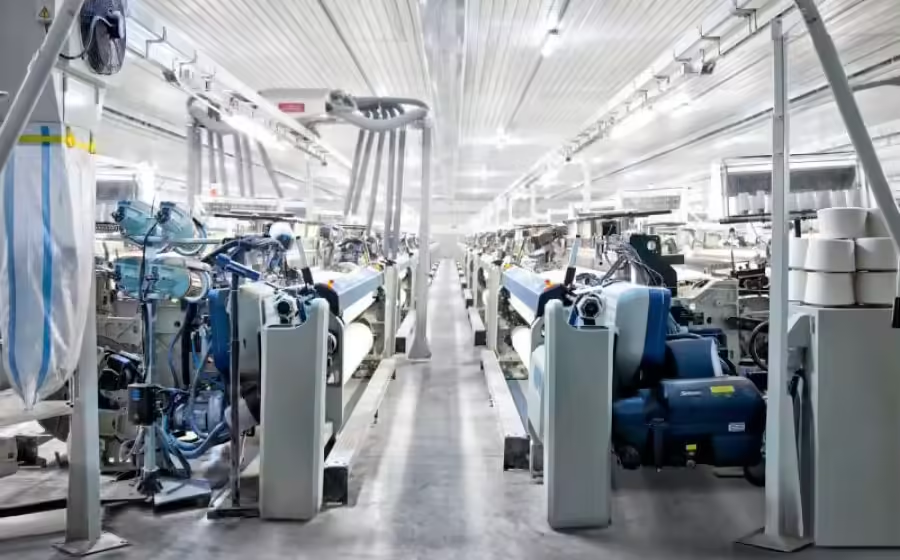Hierapolis was an important center in the production of textile
Hierapolis at the Lycus Valley lived its golden age in development in the 2nd and the 3rd centuries A.D.
In the ancient sources it is written that the sheep of Hierapolis used to drink from a redolent river and for that reason their wool had different colors.
Although Hierapolis was severely damaged because of a destructive earthquake that occurred in 60 A.D. in Asia Minor, it managed to stand out as a city which possessed the textile industry. The inscriptions in Hierapolis mention a guild of wool scourers and tinters. Mineral water in the city was used for this kind of processes.
Hierapolis at the Lycus Valley lived its golden age in the 2nd and the 3rd centuries A.D. The fabric woven within the city was exported into Italy, moreover with the coins minted in the city, close commercial relations were established with the cities of Western Anatolia (Ephesus, Pergamon, Smyrna, Sardes, Aphrodisias etc.)
Hierapolis possessed the appearance of a factory city of antiquity owing to the fabrication and coloration of textile products and carpet weaving. This fabrication was concerted with the other cities of the Lycus Valley such as Laodicea and Colossae.
Not only wool washers but also carpet weavers and violet tinters formed up a guild in Hierapolis. The thermal water of the city was prevalently utilized while dyeing the wool violet due to the high amount of lime inside. This wool, which was dyed with the tints obtained from red roots, could be recognized anywhere with its violet color.
Ancient sources mention some local sheep with soft wool. It is cited that within this region the sheep would drink from a redolent stream and consequently their wool had distinctive colors.
About the local sheep and their wool the Roman author Vitruvius wrote the following words: “When sheep are ready to breed at the appropriate season of the year, they are taken to those rivers to drink every day, and as a result, no matter how white they are, they give birth to lambs that are whitish brown in some spots, gray in others, and black as a raven in others. Thus, the peculiar character of the fluid that enters their body produces the quality in which it is in each case.” (Vitruvius. VIII. III.14).
The cited redolent stream probably had to be the thermal water of Hierapolis. Additionally, in accordance with the extant information endowed by Strabon, the wool of the sheep was bathed in this thermal water in Hierapolis, which was also suitable for wood tinting.
This is what the ancient geographer Strabon cites about the waters of Hierapolis: “The water in Hierapolis was specially adapted for dyeing wool. Items stained with “roots” compete with those stained with cox or sea purple. There is such an abundance of water that there are natural baths all over the city.” (Strabon. XIII.4.14)
Mass production of ready-made garments became widespread in the Lycus region for the first time in ancient times. Clothing productions reflecting the fashion tastes of the period became so widespread in the region that even Roman palaces used clothes from this region in the 2nd and 3rd centuries AD. In this period, buying and wearing Lycus valley fabrics became a symbol of privilege and prestige.
Even the graves were decorated with carpets, rugs and fabrics woven in the cities of Lycus valley. The weaving union formed in the region was the stock exchange of the period. In consonance with these stock market decisions, it was rigorously outlawed to produce fabric from substandard wool and to make ready-made clothing from substandard fabric. Those who fabricated such fraudulent production were excluded from the stock market membership. By cause of this fabrication of high quality, the cities within the valley reached a great level of wealth and prosperity.
Although sheep and textile commerce was seen in all three of Colossae, Hierapolis and Laodicea, the latter was the center of the wool industry. Whether or not it was fabricated in Laodicea, the entire wool industry managed in this region was acknowledged as “Laodicea” in the outside world.
Clothes produced in Laodicea were also included in Diocletian’s tax list as well. According to the customs law of Ephesus, known to have been valid in Asia Minor in AD 62, 10% of the goods produced in a place were taken out of the customs borders, introduced into the monetary economy and subjected to customs duty. Nonetheless, textile products which were luxury costumer goods fabricated in Laodicea and Hierapolis in Asia and were exempted from this.
Tomb inscriptions of the merchants
The inscriptions on several tombs of Hierapolis belonging to the merchants provide information on how the textiles were exported to the countries overseas. This aforementioned trade would bring wealth to the cities of the Lycus valley.
On the Greek inscription in the Mausoleum of the merchant Flavia Zeuxis (1st century AD), it is stated that he transported the textiles (carpets, rugs, fabrics, etc.) fabricated in Hierapolis to the harbor of Ephesus and shipped them to the countries in the Mediterranean basin and during these excursions to Italy he passed over the Cape Maleas 72 times.
During the Roman and Byzantine periods, Hierapolis possessed great importance owed to this wool industry. In numerous inscriptions, there is information about the existence and activities of tradesmen’s unions in the city concerning this area of fabrication. The wool fabricated in all the surrounding cities was processed by different groups of artisans. An inscription states that the head of the guild, who held a high rank within the city, salutes the “head of the washers”.
Palaz Erdemir, H. (2007). Antikçağ’da Hierapolis ve Çevresinde Koyun Yetiştiriciliği ve Yan Sektörleri. Uluslararası Denizli ve Çevresi Tarih ve Kültür Sempozyumu Bildiriler Kitabı, 6(8), 23-30.
Ozan Karahan, Ü. (2019). Erken Hristiyanlık Döneminde Hierapolis. Turkish Studies-Historical Analysis, 14(3), 593-606.
https://denib.gov.tr/tr/denizli-hakkinda-antik-cagdan-bu-yana-denizlide-tekstil.htm
- With which other cities did Hierapolis hold close relations?
Hierapolis had close commercial relation with several cities of Western Anatolia such as Ephesus, Pergamon, Smyrna, Sardes, Aphrodisias etc.
- What was the reason that the wool of Hierapolis had distinctive colors?
The sheep of the city used to drink from a redolent stream which was so rich in line, which resulted in the reproduction of colorful offspring.
- When did Hierapolis live its splendor?
The city lived its splendor in the 2nd and the 3rd century AD in the Roman period.




